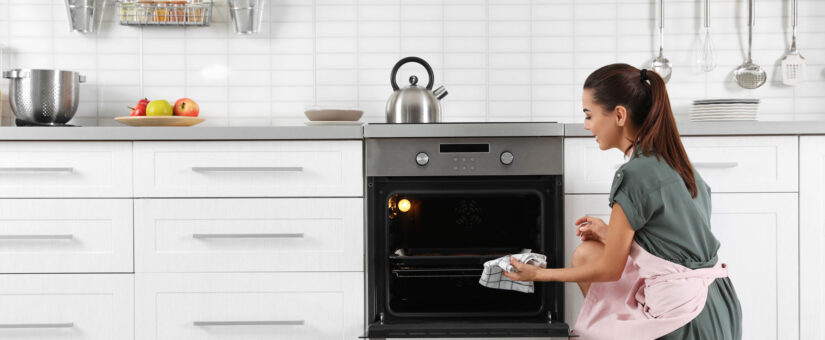
Cooking in a new oven requires proper food safety practices to prevent foodborne illness. Always verify internal temperatures using a food thermometer (165°F for poultry, 160°F for ground meats, 145°F for whole cuts), maintain proper ventilation, and clean regularly to prevent cross-contamination. Modern ovens with precise temperature control features help ensure food safety while delivering better cooking results.
| Food Type | Safe Internal Temperature | Key Safety Tips |
|---|---|---|
| Poultry | 165°F | Check temperature in thickest part, avoid bones |
| Ground Meats | 160°F | Check multiple spots, ensure even cooking |
| Whole Cuts (beef, pork) | 145°F | Allow 3-minute rest time after cooking |
| Leftovers/Casseroles | 165°F | Reheat thoroughly, stir for even temperature |
| Soups/Sauces | Bring to boil | Stir frequently to ensure even heating |
Introduction
Overview of New Oven Cooking
Getting to use a new oven can be super exciting. It’s a chance to try out new recipes and cooking methods. Modern ovens especially electric ones come with tons of features that make cooking easier. They have settings for everything like baking and roasting. Digital controls let you set cooking times and built-in temperature sensors make sure your meals come out just right.
Plus many of today’s ovens have self-cleaning features and energy-saving options so cooking is not just fun but also better for the planet. With a little practice your new oven can turn into your best kitchen buddy.
Importance of Food Safety
Even though the thrill of using your new oven might steal the spotlight don’t forget about safety when it comes to food. The yummy smell of a fresh dish can turn bad if the food isn’t safe to eat. Here are some food safety practices you won’t want to overlook:
- Temperature Control: Always preheat your oven to make sure your food cooks evenly.
- Proper Food Storage: Keep raw and cooked foods separate to lower your chances of foodborne illnesses.
- Regular Cleaning: Clean your oven often to stop residue buildup which can change the taste and safety of your meals.
By sticking to these tips, you’ll not only enjoy cooking more but also look after your health.
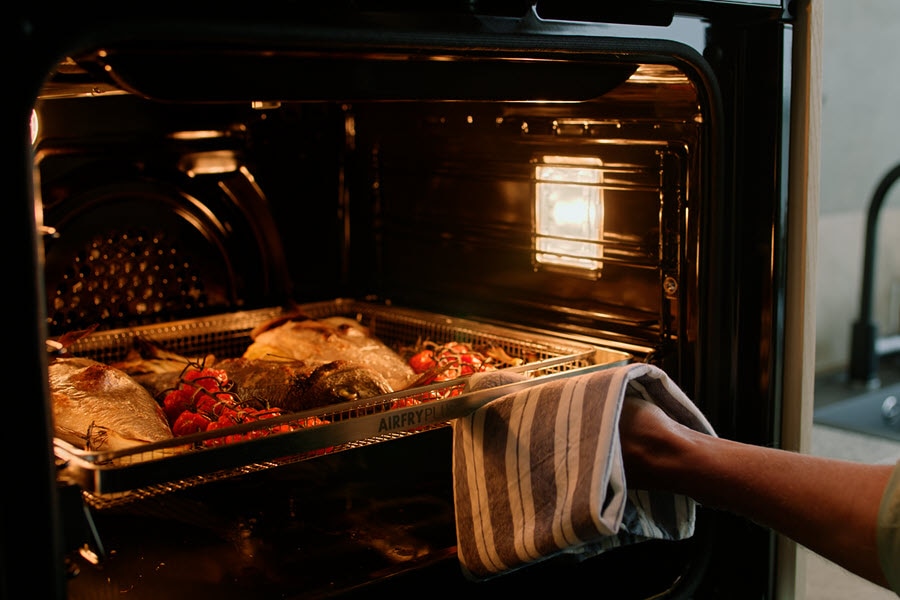
Understanding the New Oven
Features of Modern Ovens
- Smart Technology: Many ovens now connect to your smartphone letting you control them from anywhere. You can preheat it or change settings while you move around the house.
- Self-Cleaning Functions: Forget scrubbing that oven. Self-cleaning modes heat up to get rid of food residue making it as easy as pushing a button.
- Special Cooking Modes: You can bake or air fry your meals with the specialized options. For instance the convection setting circulates hot air resulting in faster and crispier food.
All these features not only make the cooking process smoother but also help you get those restaurant-quality results at home boosting your confidence.
Temperature Control and Accuracy
One of the best things about modern ovens is how well they control temperature. Unlike older models that often had no consistent heat, new ovens give you precise settings which can make a real difference in how your food turns out.
- Digital Displays: Most of the new ovens have digital screens where you can set and keep an eye on your cooking temperatures.
- Thermometer Integration: Some even come with meat probes to ensure your meat is perfectly cooked.
- Preheating Alerts: These ovens let you know when they reach the right temperature helping you avoid undercooked or overdone meals.
Investing in an oven with advanced temperature features can make cooking more enjoyable and takes the stress out of meal prep while making sure your meals are always tasty.
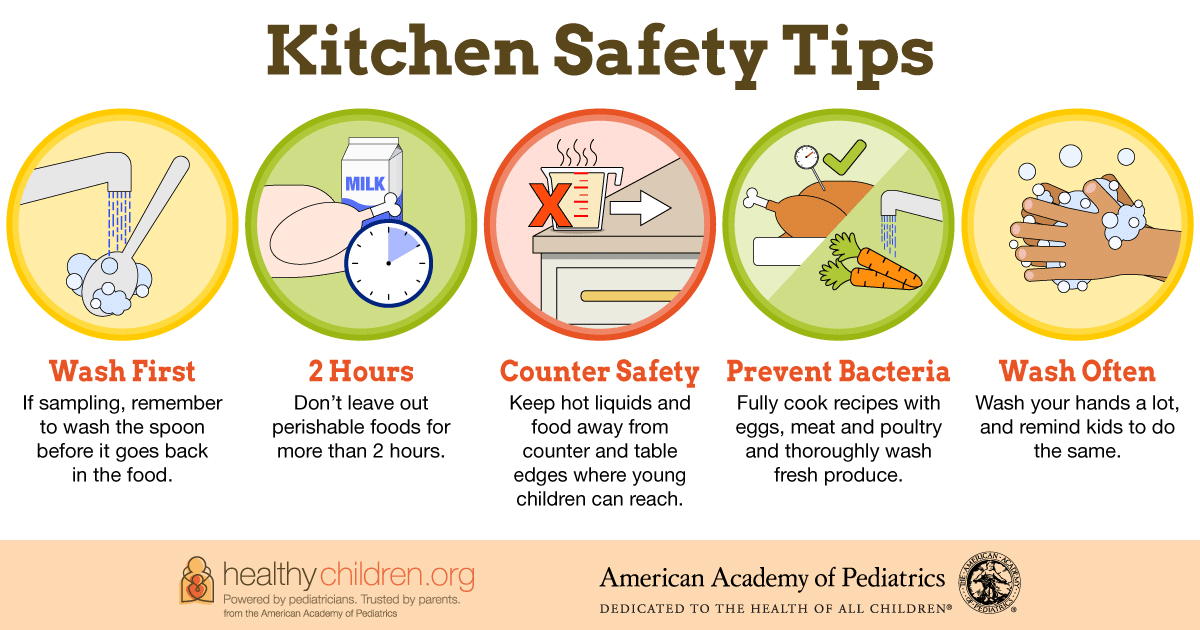
Food Safety Guidelines
Proper Food Handling
Handling food properly is key to preventing foodborne illnesses. Even the best dishes can be unsafe if you skip safety steps. Here are some must-know tips for handling food safely:
- Cook Thoroughly: Always check with a food thermometer to make sure your meat hits safe internal temps:
- Red meats: 145°F
- Ground meats: 160°F
- Poultry: 165°F
- Store Promptly: After you cook, make sure to cool and refrigerate leftovers within two hours. If it’s really hot out keep this under one hour.
- Reheat Safely: Always heat leftovers until they hit 165°F. Soups and gravies should boil.
By getting into these habits you’re really lowering the chances of food-related illnesses affecting your family.
Avoiding Cross-Contamination
Cross-contamination is a major cause of foodborne illnesses happening often without you realizing it. Here’s how to cut down on risks:
- Separate Raw from Cooked: Make sure to use different cutting boards for raw meats and other foods like fruits or bread. This small step helps keep dangerous bacteria from spreading.
- Wash Your Hands: Wash your hands often with soap and water before and after handling food including after touching raw ingredients.
- Use Clean Utensils: Don’t use utensils or plates that touched raw meat on cooked food without washing them first.
If you stick to these food safety rules, you can make sure your meals are not only tasty but also safe for your loved ones to enjoy.
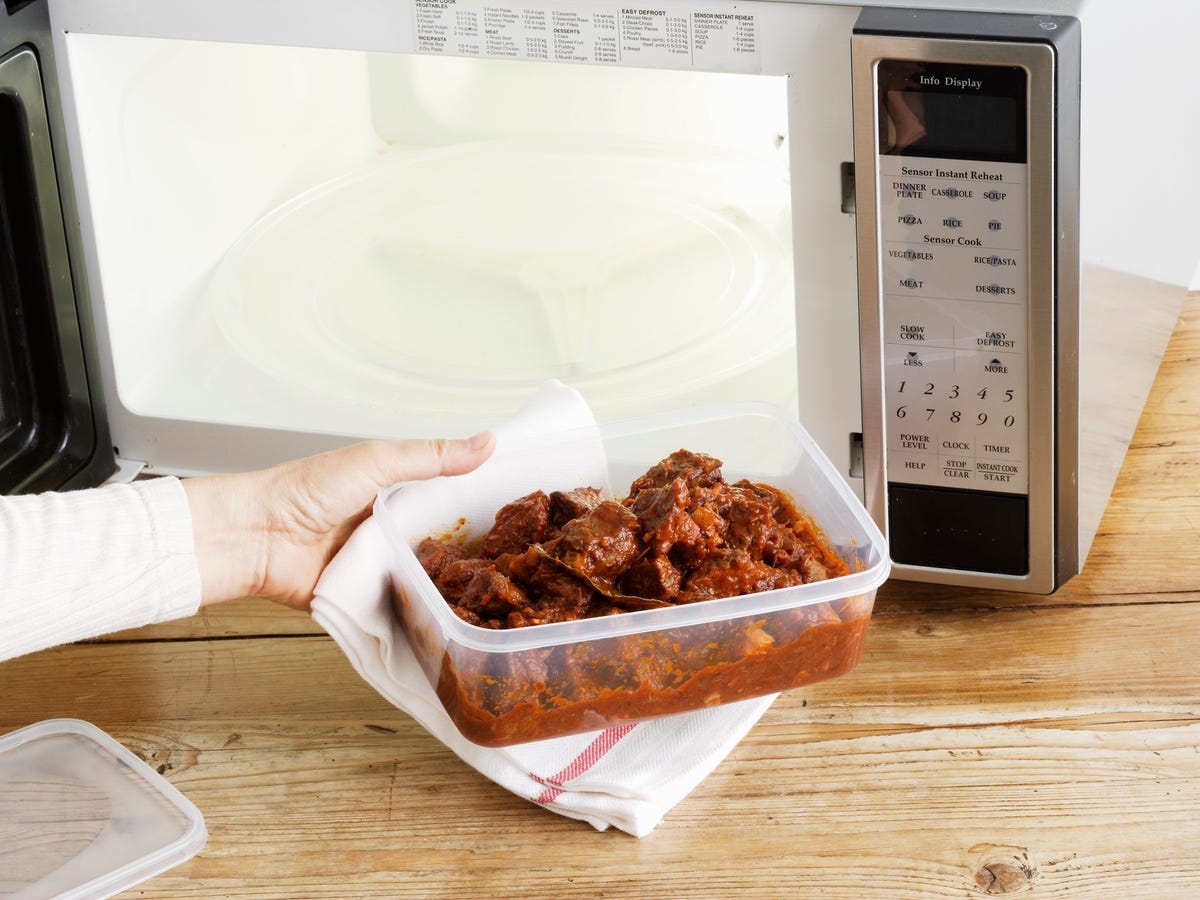
Health Risks and Concerns
Bacteria and Pathogens
Foodborne illnesses can be serious and bacteria can thrive in food that’s not cooked or handled right. Bacteria like Salmonella and E. coli can lead to big health problems if you eat them.
- Cooking Temperatures Matter: It’s really important to hit the recommended internal temperatures:
- Poultry: 165°F
- Raw meats: 145°F for whole cuts 160°F for ground meats
- Microwave Safety: Microwaves can be super handy but they can cook unevenly which might leave cold spots where bacteria can live. To make sure everything is cooked you should:
- Check several spots with a food thermometer.
- Stir microwave meals halfway through to heat evenly.
Failing to follow safe cooking practices can let harmful germs survive in your food creating serious health risks.
Potential Toxin Formation
Another worry in cooking is the chance of toxins forming from not cooking food properly. For example reheating food at low temps can let bacteria grow creating toxins that might not get killed during cooking:
- Danger Zone Awareness: Foods shouldn’t be left sitting at temps between 40°F and 140°F for longer than two hours since that can help toxins form.
- Reheating with Care: Always make sure leftover food hits at least 165°F to neutralize any potential toxins.
Taking these health risks seriously and sticking to safe cooking practices can help keep your family healthy while enjoying tasty meals.
Testing the Safety of Cooked Food
Using Food Thermometers
One of the best ways to check if your food is safe to eat is with a food thermometer. This handy tool helps make sure you avoid undercooked meals particularly with meats, poultry, and casseroles.
- Key Temperature Guidelines:
- Poultry: 165°F
- Ground meats: 160°F
- Whole cuts of meat (beef, pork, lamb): 145°F with a rest time of three minutes
When you’re using a thermometer try to stick it in the thickest part avoiding bone or fat as this can give you the wrong temperature reading.
Best Practices for Checking Doneness
Checking if your food is done is simple with some best practices:
- Multiple Checks: When cooking larger items like roasts or whole chickens, check at different spots to be sure it cooks evenly. Cold spots can hide harmful bacteria so don’t skip this.
- Microwave Cooking Tips: If you’re using a microwave, give your food time to rest after cooking. The center can be cooler and needs more time to warm up properly as it gets heat from the edges.
- Use the Right Tools: Get a good quality instant-read thermometer for quick checks—this saves time and keeps you safe.
By using these checking methods, you can enjoy your meals knowing they’re safe to eat.
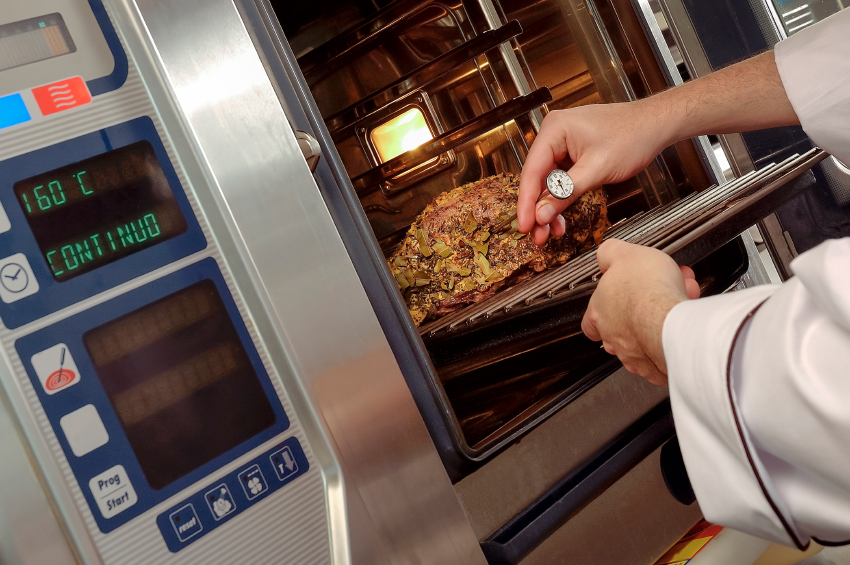 Common Myths and Misconceptions
Common Myths and MisconceptionsOven Sterilization
One big myth floating around is that cooking food at very high temps in your oven can sterilize it and your surfaces. Sure heat can kill bacteria but there are a few details to keep in mind.
- Temperature Limitations: Not all dangerous bacteria are killed at the same temp. Some bacteria like Bacillus cereus can produce toxins that survive high temperatures. So just cranking the heat doesn’t ensure safety.
- Cooling Effects: If food is left in the oven after cooking which can happen by accident it can still be at risk for bacteria growth if not kept at safe temps. Leaving it out can wipe out the benefits of cooking it right.
- Food Thermometer Use: The most reliable way to check that your food gets to a safe temp is by using a food thermometer. It’s the only way to be sure the middle of your dish hits the necessary heat to kill germs.
Safe Reheating Practices
Reheating food seems pretty easy but there are a lot of misunderstandings. Many believe that reheating leftovers makes them safe but that’s not always true.
- Monitor Temperature: Always reheat food to an internal temperature of 165°F to ensure safety. Just because it’s steaming hot doesn’t mean it’s hit the right temp all the way through.
- Even Heating: Microwaves can cause uneven heating which can leave cold spots where germs can survive. Stirring and letting food sit are really important when using a microwave to get everything heated evenly.
- Toxins Are Still Present: Keep in mind some bacteria release toxins that don’t go away with reheating like those from Staphylococcus. So if food has been sitting out too long it’s still risky even after reheating.
Knowing these myths can help you keep your cooking and reheating practices safe so your meals are not just good but also safe to eat.
Safety Tips for Safe Cooking
Cleaning and Maintenance
Keeping your kitchen and appliances clean is super important not just for looks but for health too. Regular cleaning stops cross-contamination and lowers the risk of foodborne illnesses. Here are some useful tips:
- Wipe Surfaces Frequently: Clean countertops, cutting boards, and utensils after each use especially when switching from raw to cooked foods.
- Sanitize Cutting Boards: Different materials can trap germs so run plastic and glass boards through the dishwasher and wash wooden boards by hand with mild soap.
- Maintain Your Oven: Clean your oven regularly inside and outside to stop grease build-up which can host bacteria. For deep cleaning, follow the manufacturer’s self-cleaning options.
- Check Expiration Dates: Go through your pantry and fridge regularly to toss out expired stuff helping prevent nasty food-related illnesses.
By making these cleaning practices part of your routine you can keep a safe cooking space and enjoy peace of mind.
Ensuring Proper Ventilation
Ventilation is really important in the kitchen but often overlooked. Good airflow helps avoid harmful gases smoke and odors that can impact health and food quality.
- Use Exhaust Fans: Turn on kitchen exhaust fans when cooking especially at high temperatures to minimize moisture and smoke. This keeps the kitchen air clean and fresh.
- Open Windows: When you can open windows to improve natural airflow. This helps get rid of any lingering cooking smells.
- Avoid Overcrowding: Make sure there’s enough space when cooking. Overcrowding pans and pots can lead to more smoke and aerosols making ventilation even more important.
By keeping these ventilation tips in mind, you help create a healthier cooking environment ensuring better-tasting meals and enhancing kitchen safety.
Frequently Asked Questions About New Oven Safety
Do I need to “break in” my new oven before cooking food in it?
Yes, it’s recommended to run your new oven empty at 400°F for 30-60 minutes before first use. This helps burn off manufacturing residues and oils that could affect food taste or safety.
Can the chemicals from a new oven contaminate my food?
Modern ovens are designed with food-safe materials, but the initial heating cycle is still important to eliminate manufacturing residues. After proper break-in, your oven should not release harmful chemicals into food.
How do I know if my new oven’s temperature is accurate?
Use an oven-safe thermometer placed in the center rack and compare it to the set temperature. Most new ovens are accurate within 25°F, but you can calibrate if needed following your user manual.
What’s the most reliable way to check if food is safely cooked in a new oven?
Always use a food thermometer to check internal temperatures rather than relying on cooking time or visual cues. Different foods require specific safe temperatures as outlined in our temperature guide.
How often should I clean my new oven to maintain food safety?
Clean spills immediately after the oven cools to prevent bacteria growth and smoke. For routine cleaning, wipe down the interior monthly and run the self-cleaning function (if available) every 3-6 months depending on usage.

A Bergen County institution celebrating authentic Jewish cuisine since 1985. Our pastrami—brined for 14 days, smoked over applewood for 12 hours, and steamed to perfection—creates a melt-in-your-mouth experience that rivals Manhattan’s finest delis. Our rye bread is baked fresh daily using a century-old recipe from Poland. Featured in Food & Wine’s “Top 10 Delicatessens in America” and on Food Network’s “Best Thing I Ever Ate.” Chef Moshe Greenbaum, a third-generation deli master trained at the Culinary Institute of America, ensures every sandwich meets our exacting standards. No wonder our customers drive from three states away.
Leave a Reply